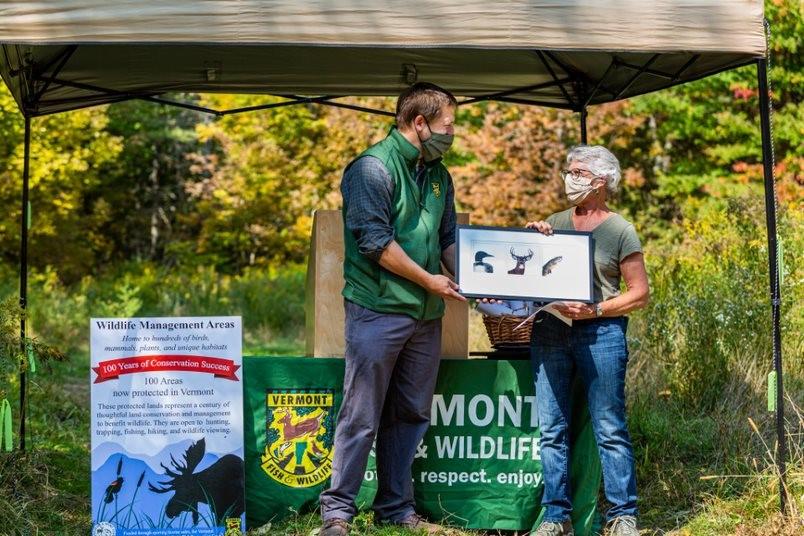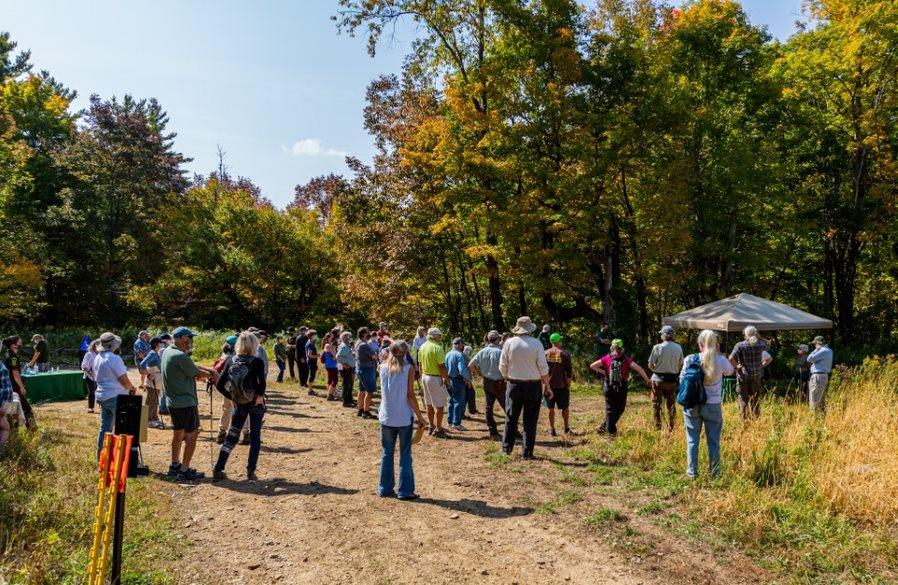Celebration of a Conservation Milestone: 100 Wildlife Management Areas
On Saturday, September 26th, 2020, I attended a milestone event in Shrewsbury, Vermont celebrating the purchase of the 100th state Wildlife Management Area in 100 years! This occasion represented the culmination of a several year effort on the part of Shrewsbury community members, the Vermont Fish and Wildlife Department (DFW), and the Vermont Land Trust (VLT). Perhaps even more significant is the 100 years of effort by dozens, if not hundreds of partners to ensure a resilient Vermont landscape.

Although we have more to do, it is appropriate to pause at this moment, take stock, and applaud how far we have come as a state. A hundred years ago we were just beginning to see the reestablishment of our previously ravaged forests. Many of our most iconic species, beaver, fisher, black bear, white-tailed deer, turkey, peregrine falcon, moose, and Atlantic salmon had declined drastically or been extirpated as a result of the massive forest clearing that occurred the century prior, as well as unregulated harvest. Since then, together, hunters, trappers, anglers, landowners, conservation partners, government agencies and motivated citizens have restored many of the species that had been at risk and conserved hundreds of thousands of acres of farms and forests around the state.
I believe these unique partnerships are what make Vermont so special. For decades unusual collaborations have formed in the name of land conservation and as a result, to date, upwards of 20% of Vermont has been permanently conserved. In 1937 Aldo Leopold wrote: “[T]he real substance of conservation lies not in the physical projects of the government, but in the mental processes of citizens...all the acts of government, in short, are of slight importance to conservation except as they affect the acts and thoughts of citizens. (Conservation Blueprints, published in American Forests December, 1937). Many Vermont citizens have historically had a close relationship to the land and have embraced a land ethic (although most may not have labeled their interest and passion as such). But the willingness of seemingly disparate groups to work together and coalesce around a common goal of land conservation represents exactly that --- a Leopold land ethic.

As we look to the challenges of the future: climate change, habitat loss and fragmentation, polarization of public attitudes, loss of connection to the out-of-doors, and invasive species, it will be especially critical that we continue to find common ground around our commitment to land conservation and fish and wildlife habitat protection.
The efforts of the citizens of Shrewsbury to work together with the Department of Fish and Wildlife and the Vermont Land Trust to conserve a local piece of property that was important to the town, not for its economic value but because of it ecological and recreational significance, epitomizes those values that we want to celebrate and foster. Leopold suggests in 'Round River': “We shall never achieve harmony with land, any more than we shall achieve justice or liberty for people. In these higher aspirations the important thing is not to achieve, but to strive". It is in the striving that we will find common ground that not only benefits the land but also improves our relationship to each other. As Wendell Berry said much more eloquently in 'A Place on Earth': “Nobody can discover the world for somebody else. Only when we discover it for ourselves does it become common ground and a common bond and we cease to be alone”.
-Kim Royar, Wildlife Biologist, Vermont Department of Fish & Wildlife
September 2020